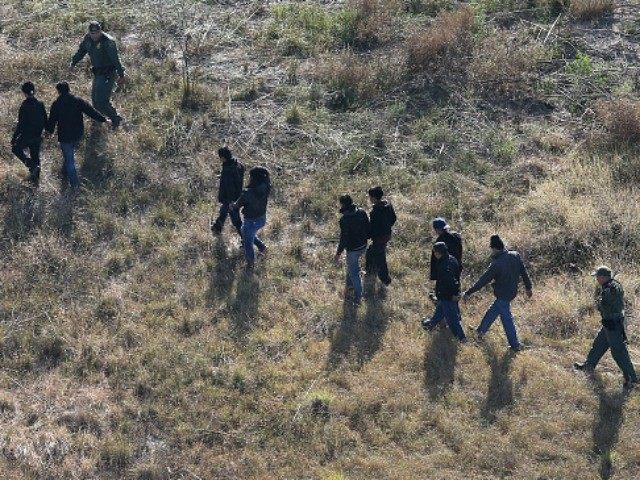Border agents in Mexico and the United States are apprehending an increasing number of African, Asian, and Middle Eastern illegal immigrants attempting to enter the countries’ southern borders than previous years, according to Reuters.
Reuters reports that border agents in the U.S. and Mexico have noticed a significant spike in the number of apprehensions of illegal immigrants from countries outside of the Americas. In Mexico, for example, officials apprehended 6,342 Asian, African and Middle Eastern migrants trying to illegally enter Mexico during the first half of this year, up from 4,261 apprehended throughout the entirety of 2015, and 1,831 in 2014.
Additionally, in the U.S., Reuters reports, agents reported apprehensions of 5,350 African and Asian illegal immigrants at the U.S. southern border from October 2015 and May 2016, on pace to surpass all of FY 2015 when 6,126 similar illegal immigrants were apprehended and FY 2014 when just 4,172 were apprehended.
According to Reuters, U.S. agents have travelled to Mexico and interviewing some 640 migrants from countries beyond the Americas who have been held at a center in Tapachula, Mexico since 2015. Based on 14 interviews obtained and reviewed by the news service, the migration flow northward often begins after a flight to Brazil. Once in Brazil the migrants obtain fake travel documents, are smuggled to Panama, and begin their trek through Central America to Mexico and the United States.
With the global terrorist threat rising and U.S. security concerns rampant, Reuters reports that the U.S. has started to engage Mexico and Central American countries in the U.S. Amid security concerns.
“The reality is that the vast majority of the people that Mexico encounters that are extra-continental will eventually end up on our border,” a U.S. Customs and Border Protection (CBP) official told Reuters.
The concerns that these migrants could pose a risk has U.S. officials looking southward to help stem the tide before it reaches U.S. shores, or in this case, the U.S.-Mexico border. U.S. Customs and Border Patrol agents have, according to documents reviewed by Reuters for example, been stationed at the center in Tapachula since October to train Mexican officials on sussing out potential threats, via interview strategies and U.S. criminal databases.
U.S. Customs and Border Patrol began a pilot program for a similar operation in Panama earlier this fiscal year, according to an internal memo sent in May that has not previously been reported. Homeland Security officials told Reuters that Panama requested U.S. training. A spokesman for Panama’s National Migration Service said Panama accepted an offer from the U.S. embassy for training on subjects like “defense techniques” and “management of persons.”
U.S. proponents of the program have pushed for a greater U.S. footprint to build a “comprehensive intelligence picture” of migration patterns across the Colombia-Panama border, according to the memo sent in May.
Panama is leading the effort in Central America to detain illegal migrants, DHS assistant secretary for international affairs Alan Bersin told a House committee in March, but it stymied by lack of detention space and the difficulty of deporting migrants to countries with whom they have no diplomatic ties. As a result, most are released after 30 days.
Bersin acknowledged the rise in migrants from outside the Americas and the potential security threat they pose.
“While many citizens of these countries migrate for economic reasons or because they are fleeing persecution in their home countries, this group may include migrants who are affiliated with foreign terrorist organizations, intelligence agencies, and organized criminal syndicates,” Bersin told the House Committee on Foreign Affairs.
In other South and Central American countries the Department of Homeland Security has been dispatching officials to guide efforts on identifying potential threats, Reuters reports.
Another DHS official said the agency is asking Brazil through diplomatic channels to put a stop to fake passport manufacturing. Brazilian officials did not respond to Reuters’ request for comment.
The U.S. Customs and Border Patrol, a unit of DHS, is “actively working to enhance regional collaboration with border and customs authorities from Mexico all the way down to Argentina,” a DHS official said.
Read the full report.

COMMENTS
Please let us know if you're having issues with commenting.